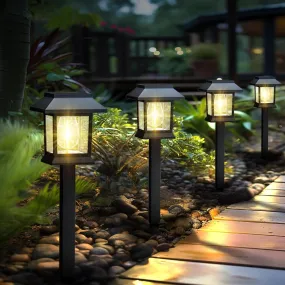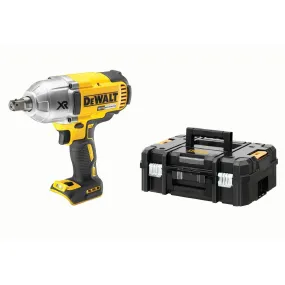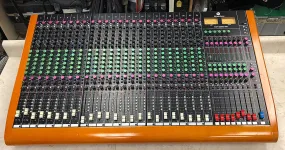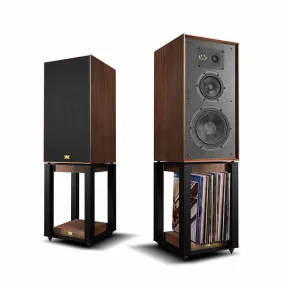 $
63.82
$
63.82
 $
49.09
$
49.09
ADD TO CART
BUY IT NOW
This article is about the new Wharfedale Super Linton Heritage speakers. We will discuss their technology, performance, and if these great speakers are for you.
Company History
Wharfedale was founded in 1932 by Gilbert Briggs in Yorkshire, England after he built and perfected a loudspeaker in his cellar. This led to Wharfedale's first commercial loudspeaker in 1933, which quickly garnered a reputation for its excellent sound quality. In the 1940s, Wharfedale pioneered the 2-way loudspeaker, a hit with its expanded frequency response and more dynamic capability. In the 1960s, Wharfedale introduced the acoustic suspension cabinet design, allowing deeper bass in a smaller cabinet. Since then, Wharfedale has put its efforts toward innovation and has secured its spot as one of the leading speaker manufacturers coming out of England. With their popularity and cult status, the new Heritage speaker line brings new technology and materials while keeping the classic looks that have made Wharfedale speakers sought after all these years.
Features & Technology
When Wharfedale introduced the reborn Linton loudspeaker in 2019, they didn’t know just how popular that model would become. It has been Wharfedale’s biggest seller since its introduction. It is an excellent example of merging today’s materials and design knowledge with the classic British aesthetic that many find very appealing. Knowing how much of a hit this new speaker is, Wharfedale decided (just like they did in the 60s) that if the Linton is this popular, a super version will also be a hit. And this is precisely what Wharfedale did. Take the already extremely popular Linton and upgrade the components and cabinetry to give an even better-performing version. Riding on the success of the Super Denton loudspeaker introduced earlier this year, Wharfedale wanted to provide the Linton speaker the same supercharged treatment.
New Damped Enclosure
It is well known that the enclosure is just as important as its drivers for producing excellent sound. The enclosure is built explicitly for the Super Linton, which has a combination of new technology while keeping the classic looks that Wharfedale is known for. The enclosure is 23.8" x 11.8" x 13.0", which is slightly larger than the Linton's 22.2" x 11.8" x 13.0" enclosure. Weight increases from around 40 lbs to about 43 lbs. The enclosure panels are built using a “sandwich” method. Two MDF layers are bonded with a special acoustic dampening glue that bonds these materials together. This construction method has the benefit of reducing resonance and giving the panels a higher rigidity. You hear more of the drivers and less of the enclosure, which is precisely what we want from a speaker enclosure. This is a considerable upgrade over the standard Linton’s cabinet and to us, it definitely boosted realism and accuracy in the music we tested them with.
The new Super Linton speakers come in walnut, mahogany, or black oak satin, featuring real, hand-matched wood veneers for a premium, furniture-grade look. On the back, you’ll find twin bass ports and high-quality binding posts. The Super Lintons don't support bi-wiring or bi-amping, and don’t need to, thanks to their 90dB sensitivity and easy-to-drive design. Also on the back is a vintage-style logo placard that proudly displays the model’s heritage, adding a touch of old-school charm. Wharfedale has done a fantastic job blending classic style with top-notch materials for a build quality designed to last generations.
The new Super Linton cabinet is designed to pair perfectly with the existing Linton speaker stands, which provide the ideal listening height and a stylish look. Custom-made for both the Linton and Super Linton models, these stands ensure a secure fit and even include a unique shelf that’s just the right size for storing your favorite records.
Better Driver, Better Bass
The Super Linton also has a new woofer. This new Kevlar coned driver has a more powerful motor structure that increases bass depth to 32 Hz, while the standard Linton is specified at 40 Hz. This means that the Super Linton is competent in the bass for a stand-mount speaker, and for some users, a subwoofer won’t even be necessary. In our testing, we definitely could feel that low end reaching deeper and made the overall sound a bit more full. Plus, the cone itself has a cool textured appearance with an inverted dust cap that we are big fans of if you decide to use them with no speaker grille.
Upgraded Treble, Upgraded Realism
The tweeter in the Super Linton has gotten an upgrade to a high-quality 1” fabric dome with dampening material for even better performance. We immediately noticed the upgraded tweeter brought out more treble detail, smoothness, imaging, and soundstage compared to the regular Lintons. Plus, there’s a new 'short horn' waveguide with an improved profile that smooths out the transition into the midrange. The whole setup is mounted on the front baffle with a sleek metal plate, giving the Super Linton a clean, refined look. So, while the new Super Linton may look a lot like the original at first glance, these upgrades add up to a much better-sounding speaker.
Midrange Driver Isolation
Moving to the midrange, the 5” Kevlar midrange driver is installed inside the Super Lintons cabinet in a separate chamber. This cylindrical chamber is filled with long-hair fiber, which cancels standing waves and gives vocals and instruments more clarity. This dampening and isolation allows the midrange to perform on par with the new woofer and tweeter.
New Crossover, New Capability
Anyone who has studied speaker design knows that the crossover can determine more about how a speaker sounds than about any or part of the speaker. Wharfedale decided they needed to give the Super Linton an upgraded, more capable crossover. Compared to the Lintons single PCB crossover boards, the Super Lintons have two boards—one for the midrange and high frequencies and one for the woofers. This keeps crosstalk between the components to a minimum and allows extra space to install the upgraded capacitors and inductors needed. Wharfedale carefully chose components that would complement the sound character of the Super Lintons. They even went so far as to use Linear Crystal-Oxygen Free Copper cables with a PE dielectric, ensuring better signal transfer. Looking at the upgraded crossovers, you can see that Wharfedale chose to use better components like precision resistors, air core inductors on the midrange and tweeters, and poly caps. These are the types of parts that great speaker designs are made of, and we are glad to see that here. Also, Wharfedale did an excellent job keeping the same 6-ohm nominal impedance (8-ohm compatible) and 90dB sensitivity of the Linton. This allows the Super LIntons to be driven by tube or solid-state amplifiers from 25-200 watts. This is great as it will enable users to have more amplification choices. Have a low-powered tube integrated, no problem; A high-powered solid-state, again, no problem, and with the higher-quality crossover, more of the amplifier’s tone will reach the speaker drivers.
Performance
When we unboxed the Super Lintons, we were very impressed with the fit and finish. The veneers are of high quality, and the finish is smooth. All of the joints were perfect, showing care during manufacturing. After mounting the Super Linton on the Wharfedale Linton stands, the Super Lintons were easy to move and get into position. At 43 lbs, they feel solid but are light enough for mobility not to be an issue. The Super Lintons come with good-looking grills but look so much better without them, so we kept them off for the duration of our tests. All of the equipment we used to test the Super Lintons were products we could see being paired with them. From the great , , or even the and made great pairings with the Super Lintons. The combination of high sensitivity, quality crossover, and a soulful nature means that the Super Lintons will work with many of the quality high-end amplification on the market.
We could tell the Super Lintons were cut from the same cloth as the Lintons. On first listen, the DNA was made apparent. Listening to the new album from The Cure, Songs From A Lost World we were met with the same full-bodied type of sound that the standard Lintons gave us but turned up a few notches. The bass has more punch and bass detail. The midrange takes a step up in detail and focus, and the treble is more dynamic and detailed. It is genuinely a hot-rodded Linton at its heart. The soundstage and imaging are still outstanding for this price class and show that if designed correctly, vintage-styled speakers can perform equally to their more contemporary-looking competition.
Taking things back to the year 2000, we listened to Audioslave’s self-titled album and were impressed with what we heard. The treble is more detailed than the standard Lintons while not adding any aggressiveness. The upgraded midrange dampening helped bring Chris Cornell’s voice to life and let it float in the room. Guitars, bass guitar, and drums all sounded punchy and balanced. For their price class, the Super Lintons are definitely worth looking at, even for folks who aren’t exactly looking for vintage-looking speakers. They are just a good speaker, period.
Overall Recommendation
We enjoyed our time with the new Wharfedale Super Lintons and feel that they are well-designed speakers that offer a lot of performance for the money. They are designed and built well and offer significant upgrades over the standard Linton. The new woofers and tweeters improve their areas of performance, and the dampened midrange chamber improves midrange clarity and focus. There are many options in the Super Lintons price class, but not many offer the vintage vibe while offering today’s better driver and crossover technology. If you are looking for a great speaker that is easy to install and position, has a cool vintage stand, and offers outstanding performance for the money, look at the new Wharfedale Super Linton. Are you in the market for speakers, and are you wondering if the Super Lintons will be right for you? Give our knowledgeable staff here at Audio Advice a call, email, or chat on our website to see if the new Super Lintons would suit your system.We’re here to help!
If you have further questions, contact our experts via . Or simply visit one of our to experience speakers, projectors, TVs, and everything in between for yourself before you make a purchase!
If you’re planning your home theater or media room, check out our , where we have everything Home Theater related, including our .
When you buy from Audio Advice, you’re buying from a trusted seller since 1978. We offer Free Shipping, Lifetime Expert Support, and our Price Guarantee. We look forward to serving you!

 $
0.00
$
0.00

 $
0.00
$
0.00

 $
0.00
$
0.00

 $
0.00
$
0.00










